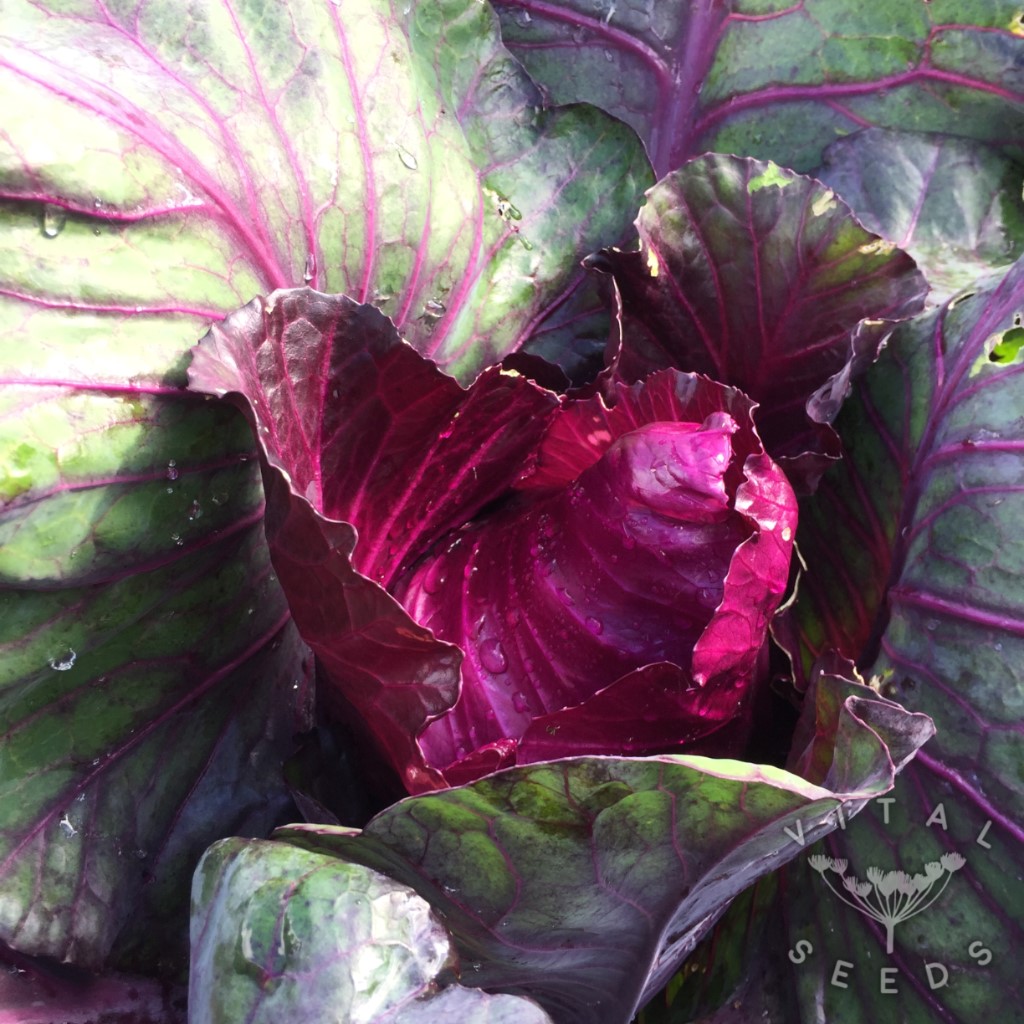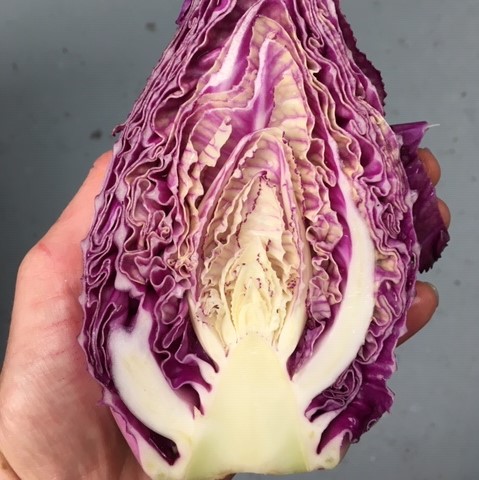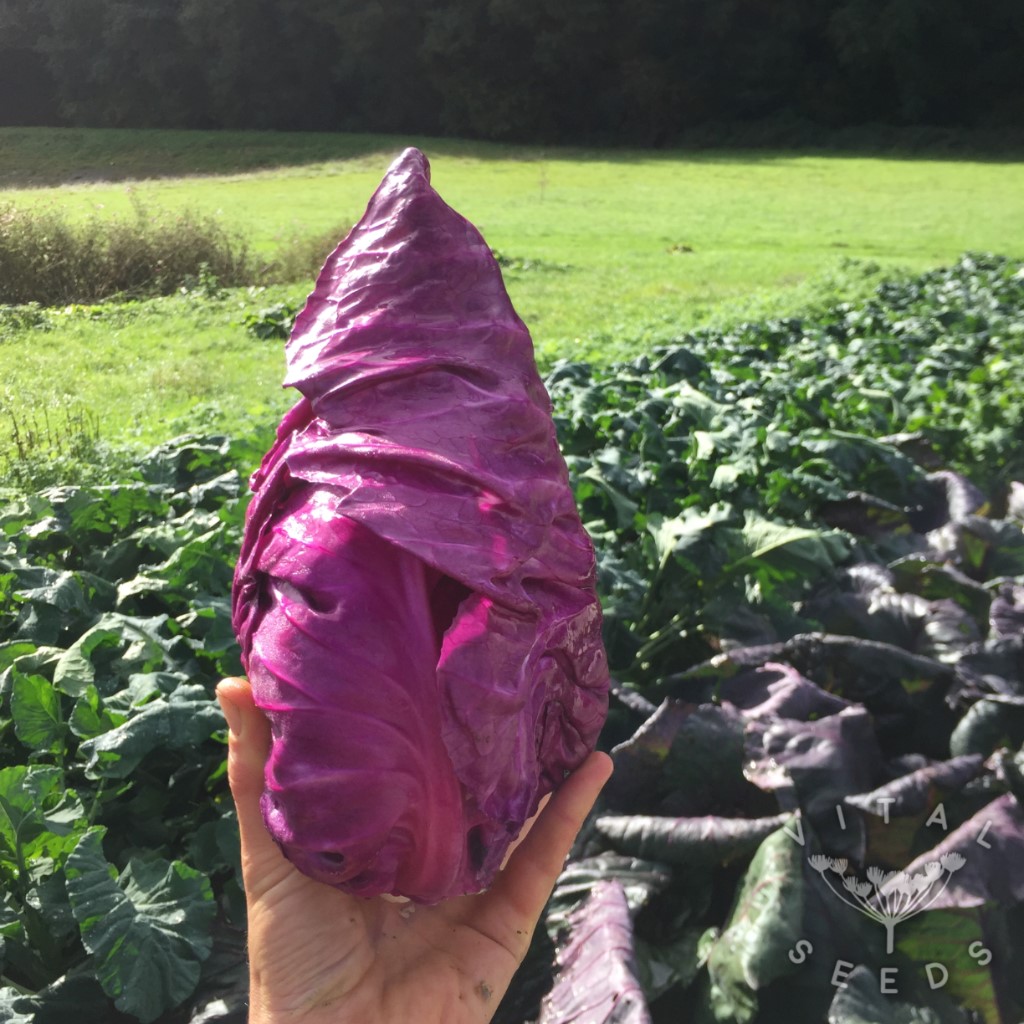Cabbage – Kalibos (Organic)
£2.70
A heritage variety from Eastern Europe producing pink/purple pointed heads of roughly 2kg. This beautiful variety is a traditional rare variety from Eastern Europe. It is deliciously sweet and is perfectly suited to shredding into salads and fermenting into saurkraut.
(Approximate seed count – 100)

In stock
Seed Sowing
There are many varieties of cabbage that can be sown at different times of the year. They are best grown in deep modules, then transplanted out later. Direct sowing is a good option later in the year as they do not like being transplanted during hot weather.
Transplanting
Transplant your seedlings into their final growing position, whether in full sun or part shade, at around 6 weeks after sowing. Make sure to keep the area weed-free and add plenty of organic matter before planting as cabbages are hungry plants. Spacing depends on the variety, it will be between 40-60cm x 50cm. When transplanting, firm them in well; they do like to be tucked in tight and protect them from frost if necessary.
Plant Care
Keep consistently watered; hot weather and dry conditions will encourage bolting. You can mulch with straw to help retain water and prevent weed growth. A cane support may be needed for taller plants in windier sites to avoid root rock. Once heads start to form water generously.
Challenges
Protect from slugs and snails, and use mesh to protect from pigeons and caterpillars. Copper collars can be used to keep away cabbage root fly. Clubroot is a disease affecting brassicas causing the roots to deform and plants to be stunted. If this is an issue, you can improve drainage and add lime to reduce infection, otherwise grow in pots.
Harvest
Harvest when the head is still compact and of good size. Take the heads from alternate plants, allowing space for the remaining ones to grow larger. Spring and summer cabbages can be cut almost to the ground, score the stem with a cross and it will produce another smaller head. Winter varieties can be left on the plant for longer and harvested when needed.
Culinary Ideas
Cabbage is a versatile year-round staple; it can be eaten cooked or raw, fermented, steamed, sautéed, braised, roasted, and stir-fried. Some classic recipes are bubble and squeak, coleslaw, and sauerkraut. Cabbage is a good source of vitamin A, C, B6, iron, magnesium, calcium, and fibre.
Seed Saving
Cabbages belong to the species brassica oleracea and will cross with all other varieties within this species if not isolated from other flowering plants. Choose at least twelve specimens that are true to type, healthy, and have shown disease resistance; avoid early bolters. Cabbage is a biennial seed crop and requires vernalisation, a period of cold that sparks the seed production process. Overwinter them either in storage or in a polytunnel or glasshouse. To allow the plants to flower, you may have to cut the head off in early winter or cut a cross into the head in early spring for the stalks to come out. Let the flowers get pollinated, and when the green seed pods begin to turn brown and the seeds inside black, cut the stem and leave to mature further on a sheet indoors. When fully dry, the seeds will easily fall out of their pods. You can stomp or stand on the material, then sieve to remove the chaff.



